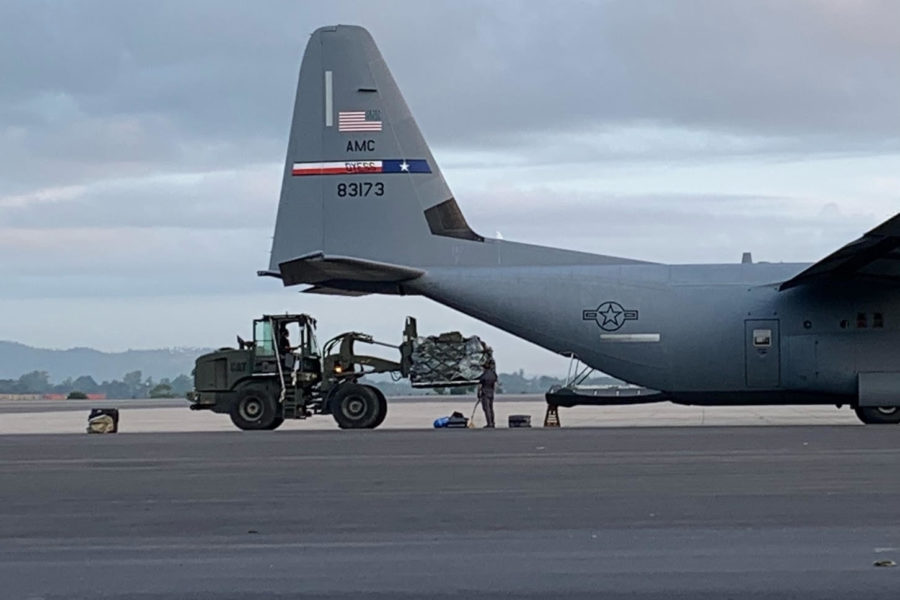President Joe Biden approved a Defense Department request to return “under 500” American forces to Somalia, where the al-Shabab terrorist group has grown in wealth and influence and increased the tempo of its attacks since American troops pulled out in January 2021.
A senior administration official told members of the press May 16 that al-Shabab posed a danger to the American homeland and to U.S. interests in East Africa.
Al-Shabab has killed a dozen Americans in East Africa, including three in a January 2020 cross-border attack on a U.S. position in Manda Bay, Kenya. In his April 14, 2021 speech announcing the U.S. withdraw from Afghanistan, President Biden said the U.S. would target growing terrorist affiliates expanding safe havens in places such as Africa.
In the 15 months since President Donald J. Trump removed 750 U.S. troops from providing a training and counterterrorism presence in Somalia, U.S. forces have commuted from nearby countries to fulfill the mission, posing increased risk and diminishing the efficacy, the official said.
“Al-Shabab, the terrorist group in Somalia that is al-Qaida’s largest, wealthiest, and deadliest affiliate, has unfortunately only grown stronger,” the official said, describing the “abrupt and sudden transition to a rotational presence.”
The rotational presence has meant a heavy burden on security forces protecting U.S. special forces as they train the elite Somali Army unit known as Danab to fight al-Shabab themselves. It has also required additional airlift for movements into and out of Somalia and harmed the effectiveness of the U.S. training.
“Rotational periods of a certain number of weeks or months are consumed, in part, by transporting and unpacking equipment, then by packing it back up at the end, and then by a re-set period,” the official said.
The non-permanent nature of the presence has also increased risks to special operators.
“That rotational presence with which we were left created a very real force protection risk,” the official said. “The President made this decision to increase the safety and effectiveness of our special operators.”
American troops were ordered out of Mogadishu but continued flying intelligence, surveillance, and reconnaissance (ISR) missions from Baledogle Airfield northwest of the capital, a Somali Air Force official told Air Force Magazine in January.
Airstrikes against al-Shabab leaders have markedly diminished since troops withdrew. That, too, would change, according to a report from the New York Times.
The report indicates that DOD sought and received presidential authority to target about a dozen terrorist leaders.
Pentagon Press Secretary John F. Kirby told reporters at a May 16 briefing that that the train-and-assist mission would not directly involve American soldiers in fighting on the ground in Somalia.
“Our forces are not now, nor will they be, directly engaged in combat operations,” he said. “The purpose here is to enable a more effective fight against al-Shabab by local forces.”
Kirby said Secretary of Defense Lloyd J. Austin III did not believe the episodic nature of training was the most effective way to counter the “heightened threat” posed by al-Shabab.
In response to a question from Air Force Magazine, Kirby said the move may lead to a reduced need for U.S. Air Forces Africa’s airlift support.
“By having a persistent presence, it’s possible there will be a diminution, if you will, on transport back and forth,” he said. “This is not going to make a huge difference resource wise.”
U.S. Air Forces Africa did not immediately respond to an inquiry from Air Force Magazine, and U.S. Africa Command declined to comment.
The official who briefed the media May 17 said “under 500” U.S. troops will be deployed to Somalia on a “persistent” basis. The official did not describe what types of troops would be deployed, or from what service, only that the troops will relocate from other East African nations.
The U.S. maintains an East African force presence in both Kenya and Djibouti, home to the only U.S. base on the continent, Camp Lemonnier.
“It’s overall roughly the same resource and personnel commitment as we currently have in that part of Africa for counterterrorism purposes,” the official said while providing no timeline for the return of U.S. forces to Somalia.
The official likened the restoration of the training and counterterrorism mission to one conducted by the U.S. Air Force and special operators in Niger at Air Base 101 in Niamey and Air Base 201 in Agadez, where several hundred heavily protected troops train local forces to fight terrorists.
“This approach aligns with what we’re doing elsewhere on the African continent, including in Niger, where U.S. forces are training and equipping the Armed Forces of Niger to conduct effective operations to counter terrorist there such as [coalition group] JNIM and ISIS-West Africa,” the official said. “Big picture, there is much work to be done in Somalia with respect to counterterrorism.”
Somalia’s successful presidential election May 15 was a stabilizing factor ahead of the announcement, the official indicated, noting the restoration of Hassan Sheikh Mohamud to the presidency, who previously served from 2012 to 2017.
No timeline was given for the movement of U.S. forces back to Somalia, but Kirby said the restoration of Somalia rotations will not constitute a deployment.
“It’s not a deployment,” he said. “This is a change in the posture. It’s about putting troops back into Somalia on a persistent basis. It’s not a deployment with an end date.”

